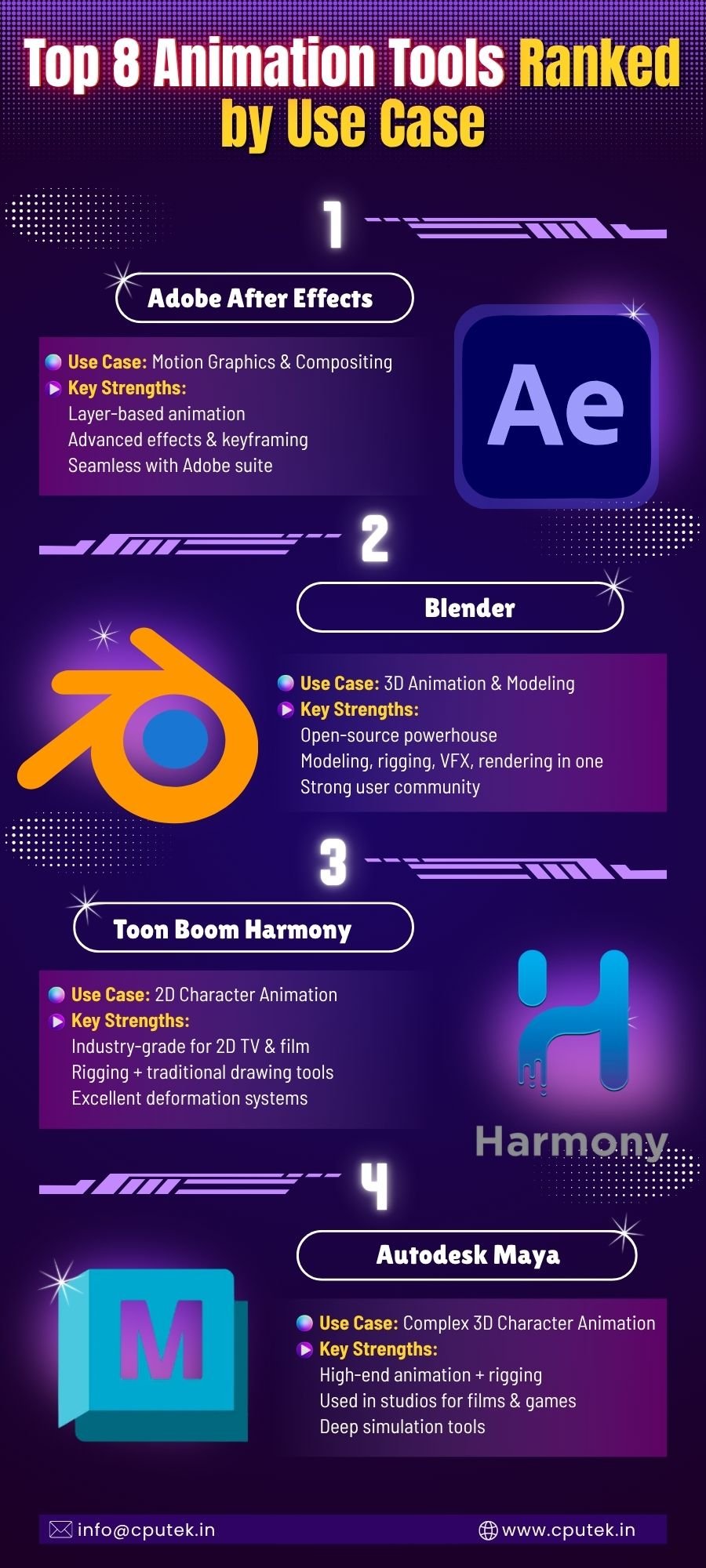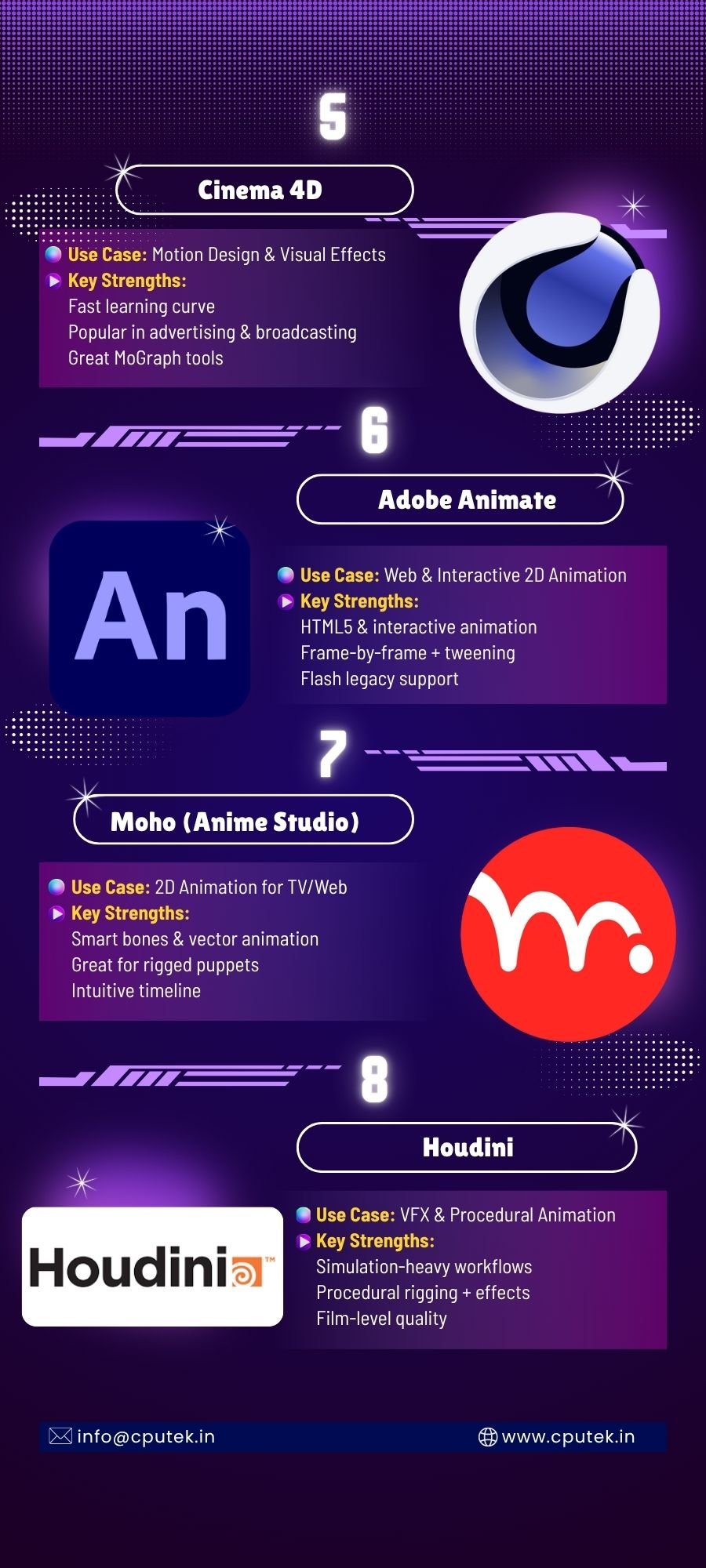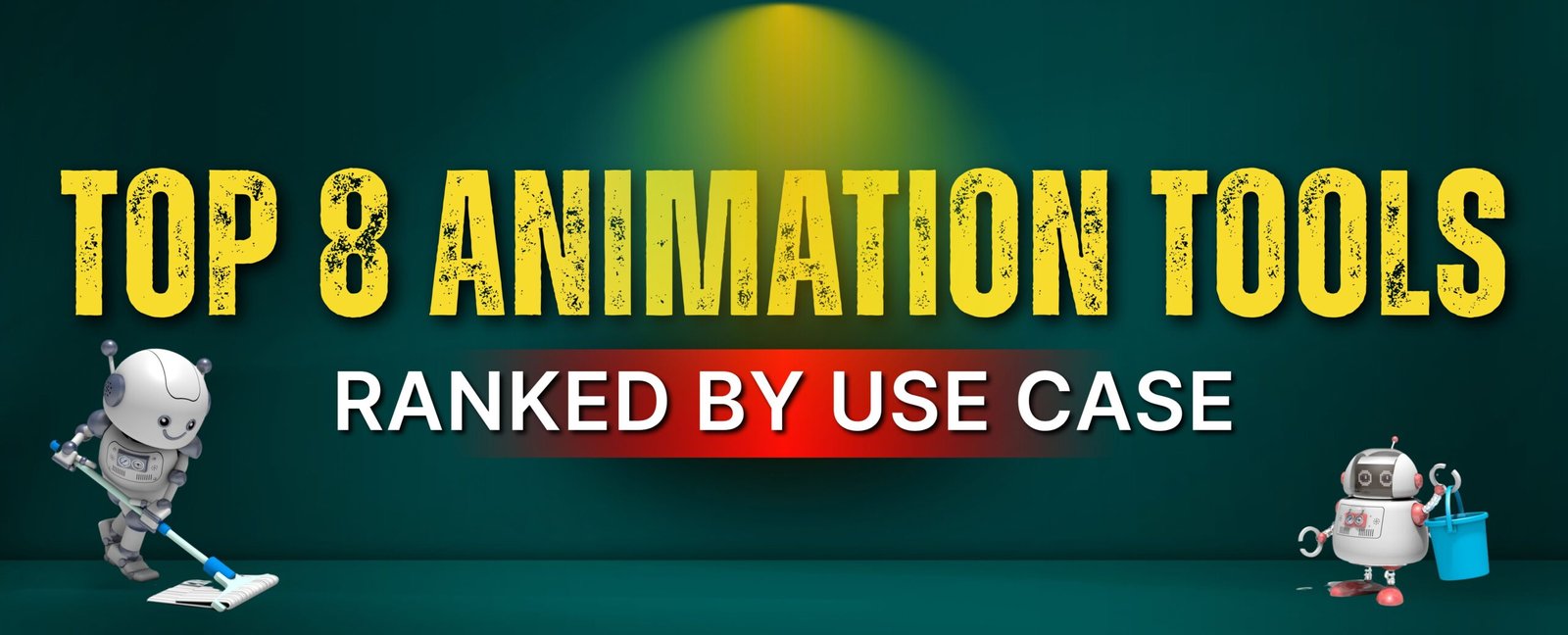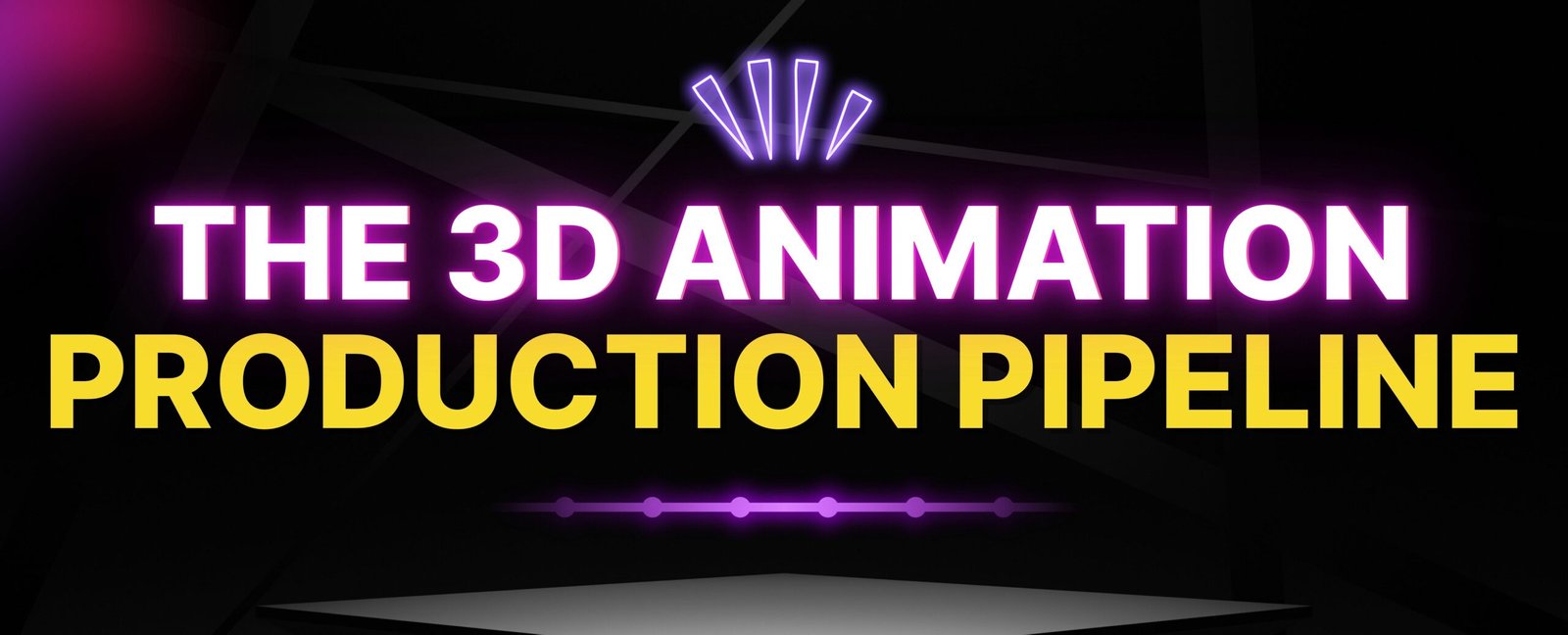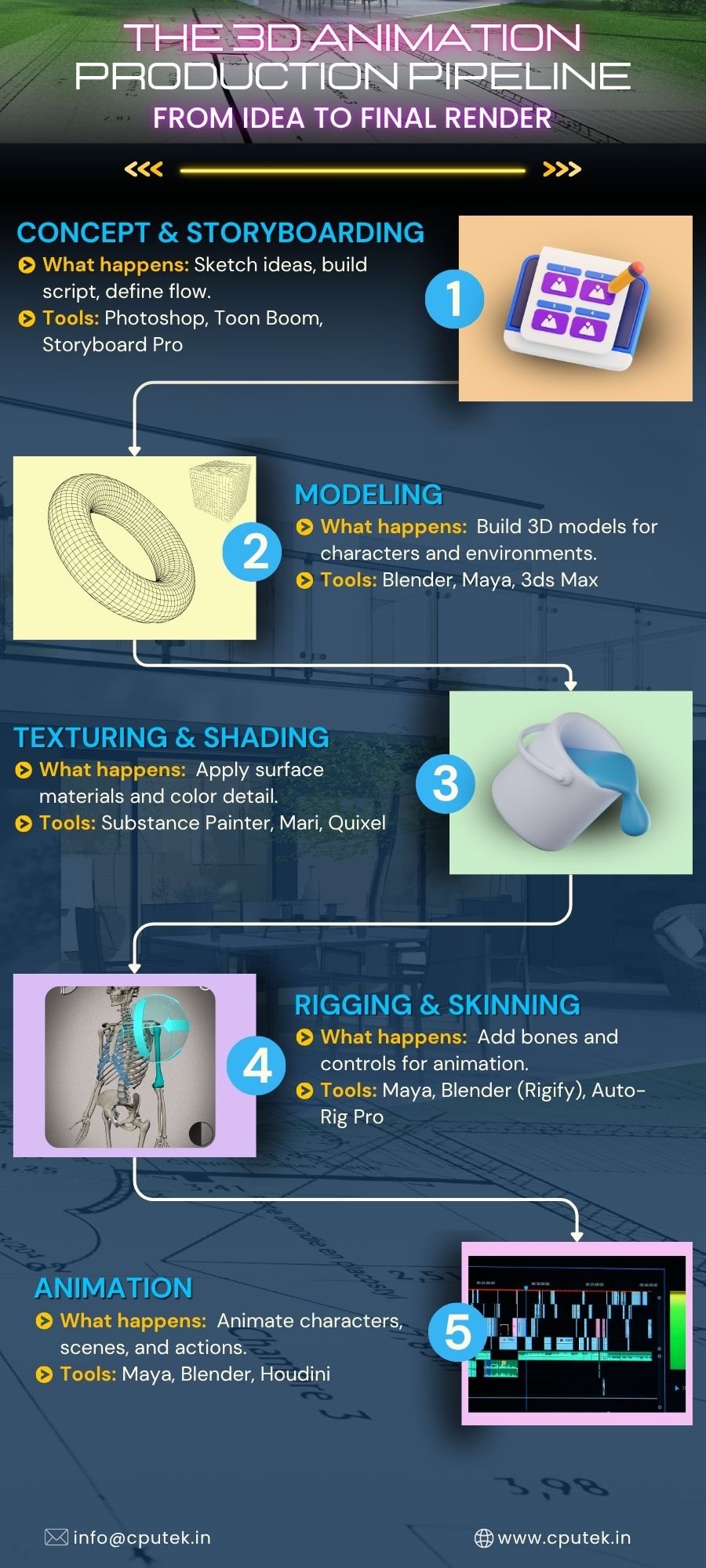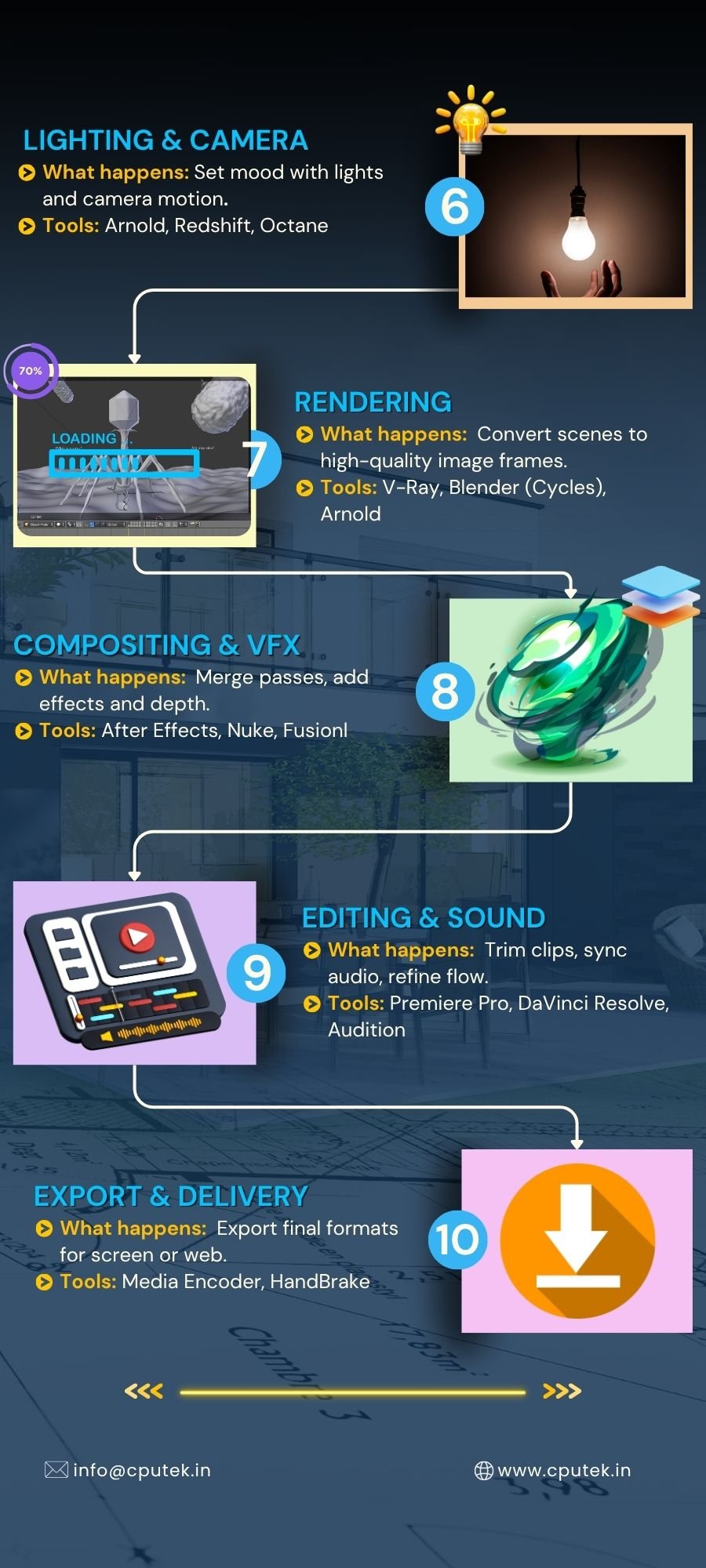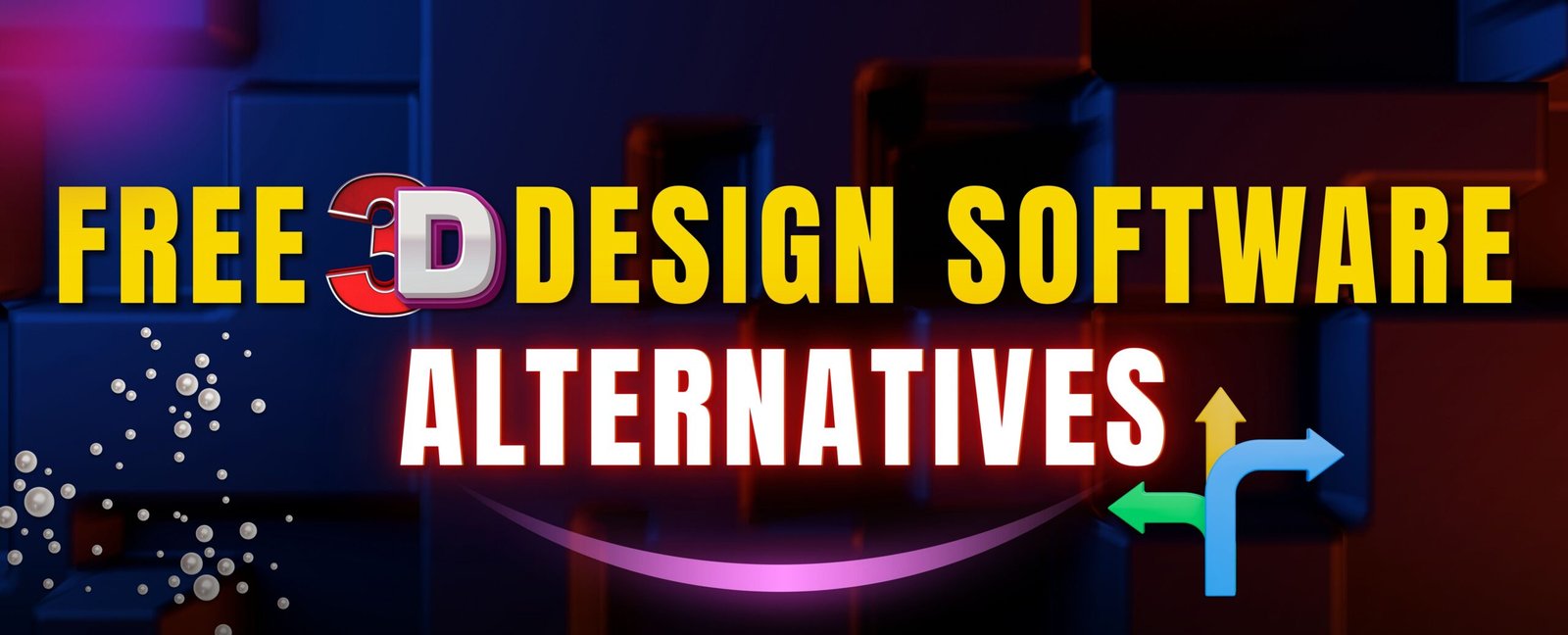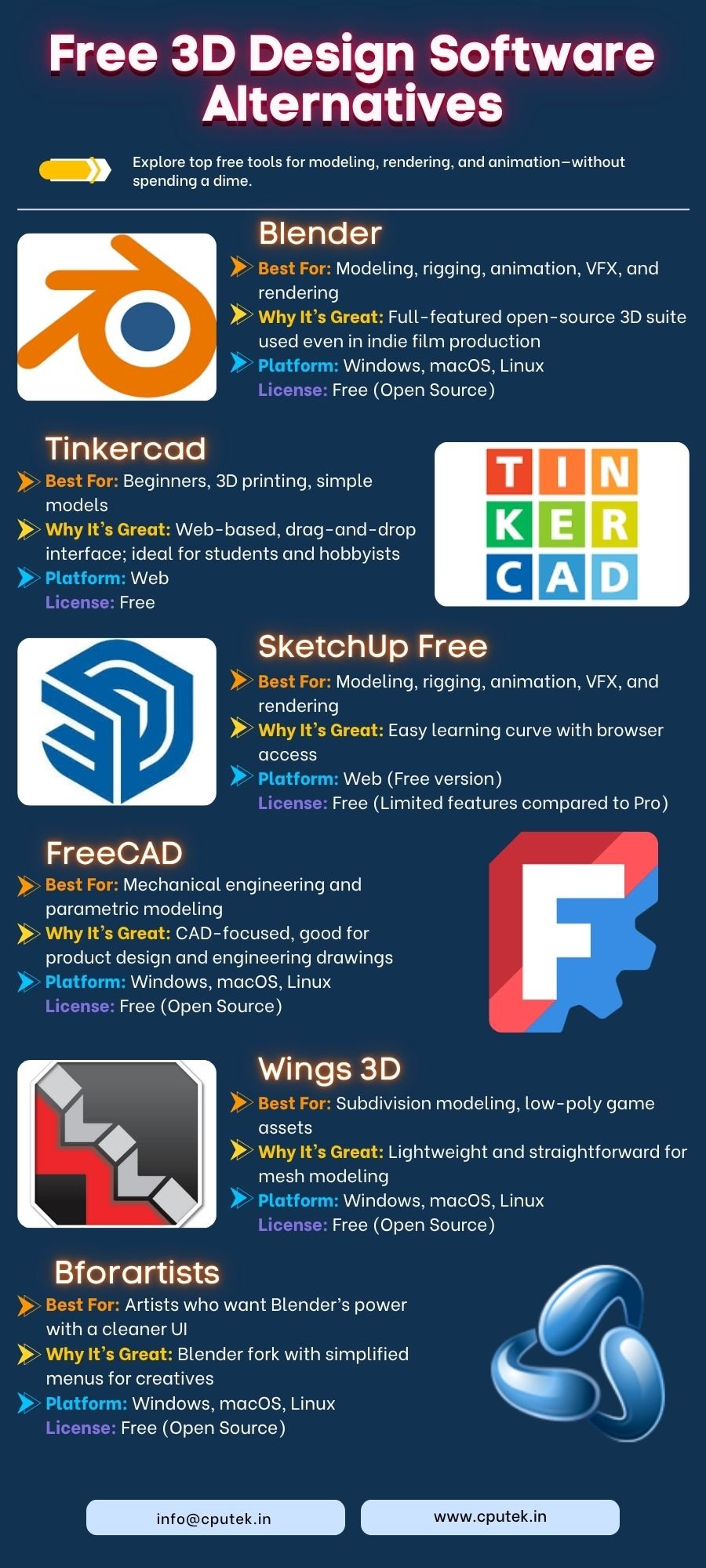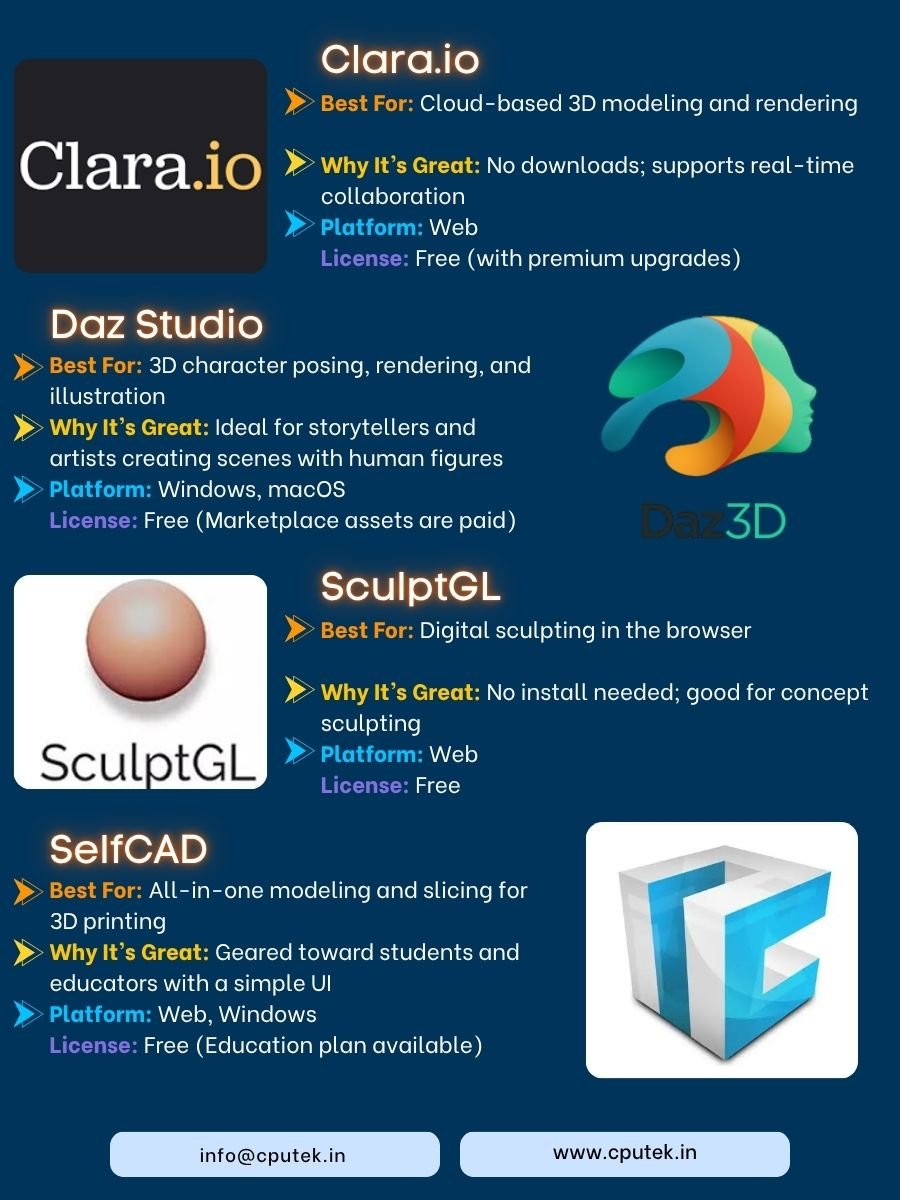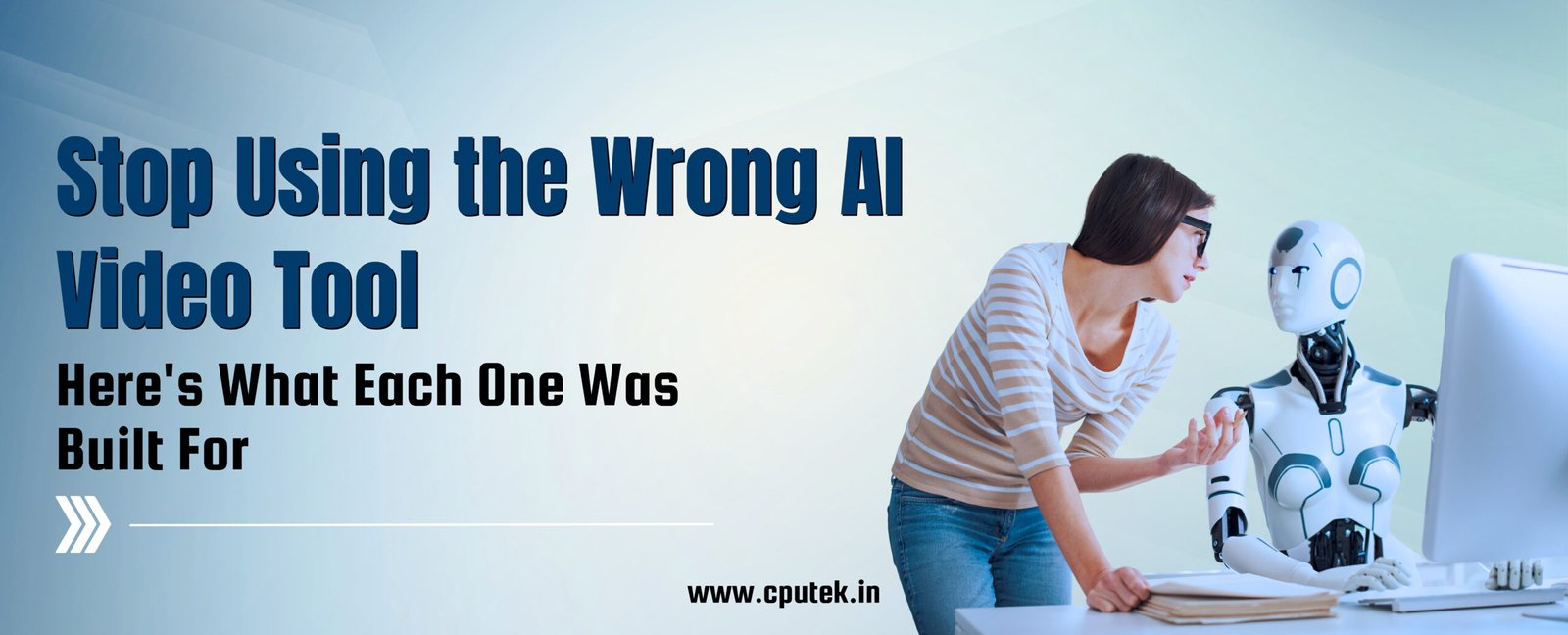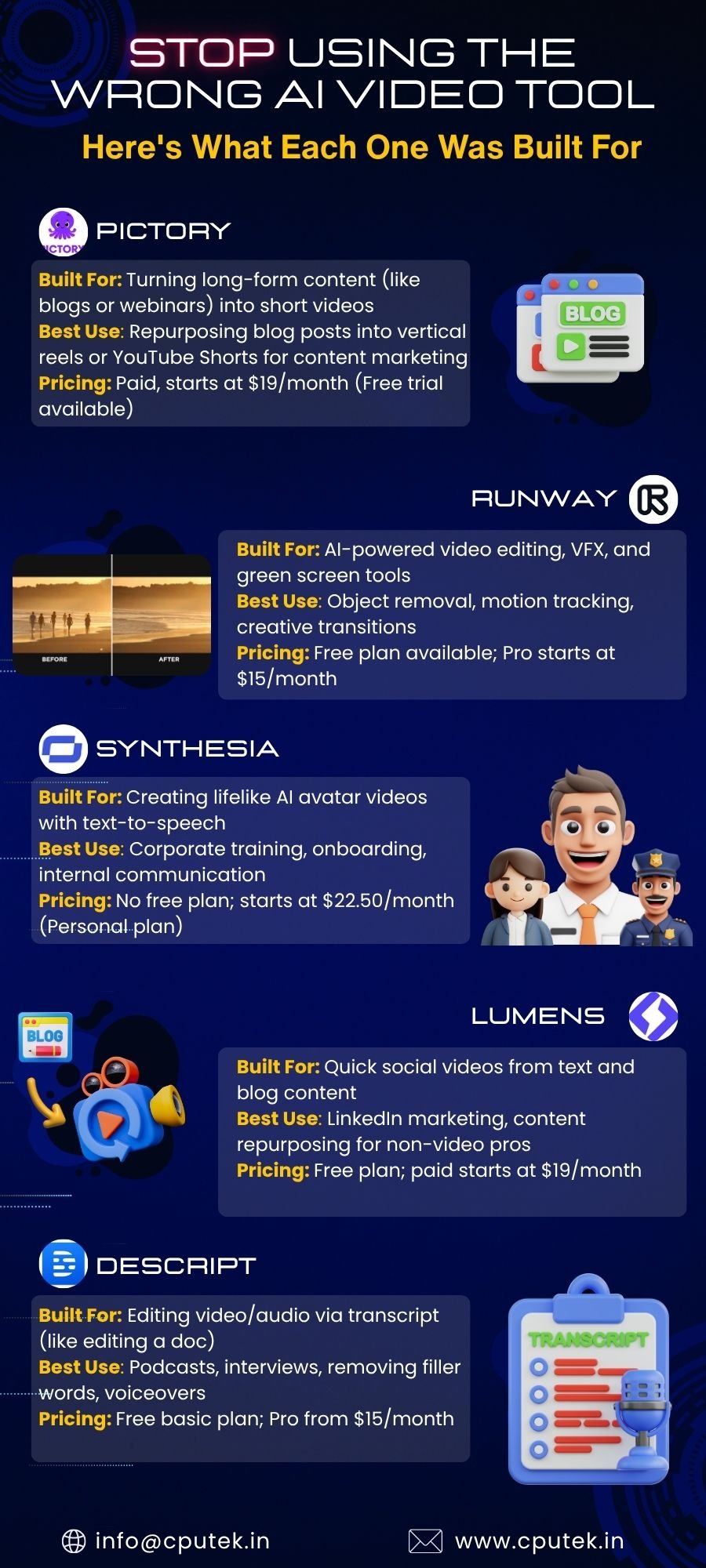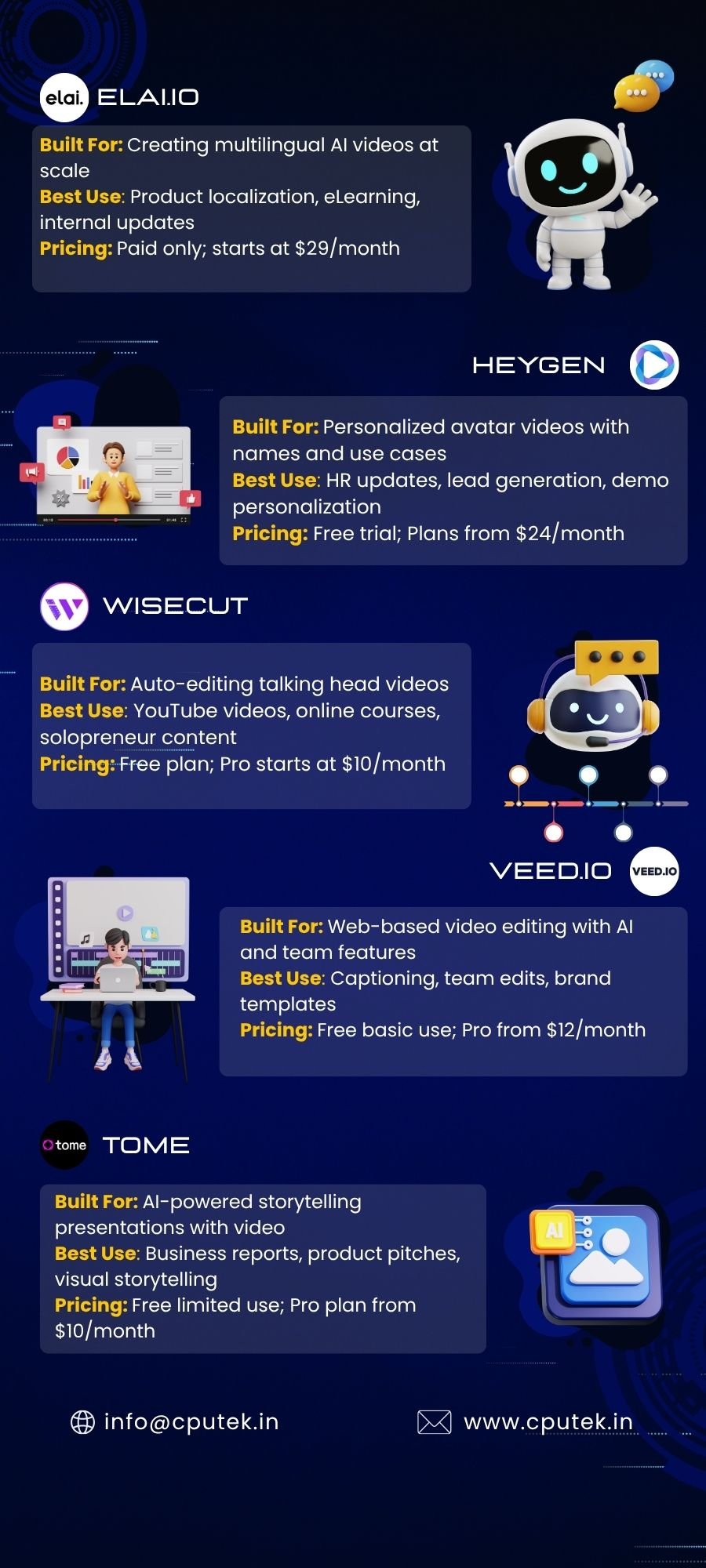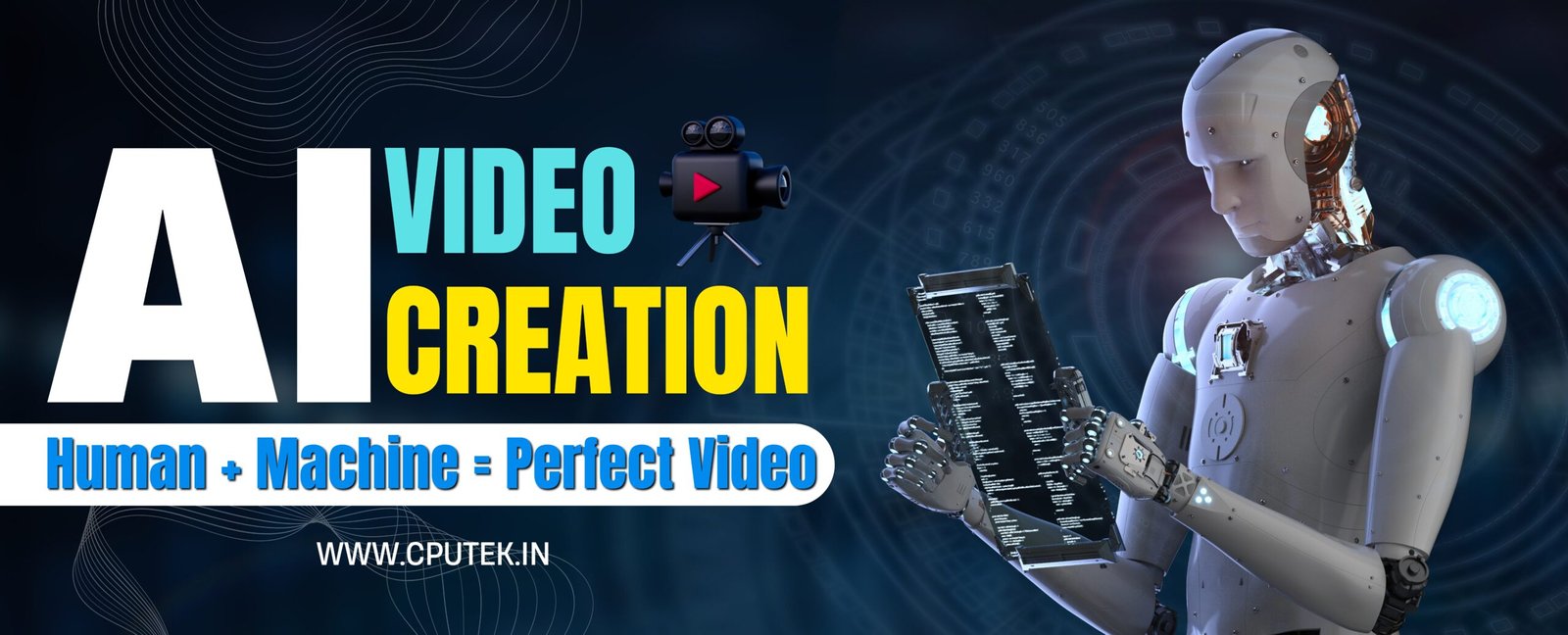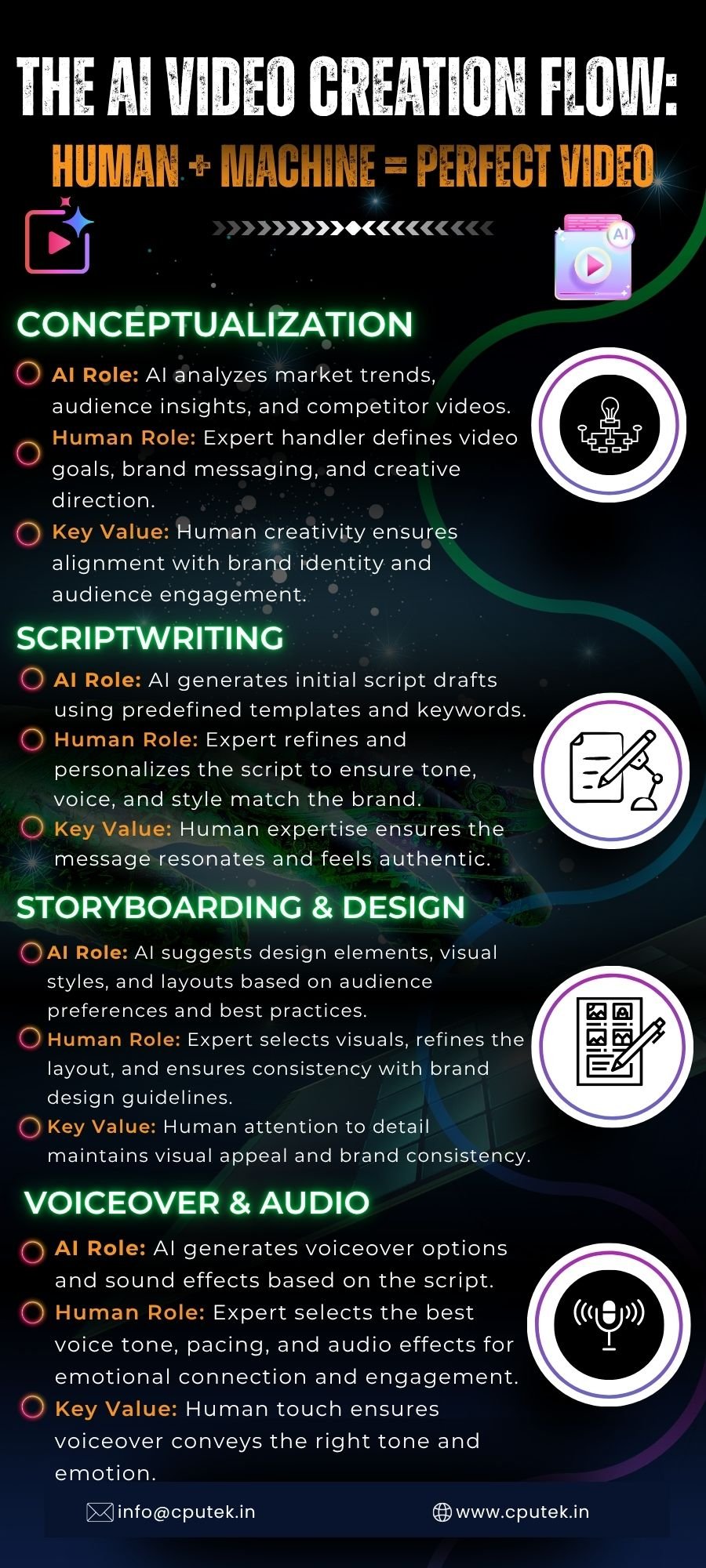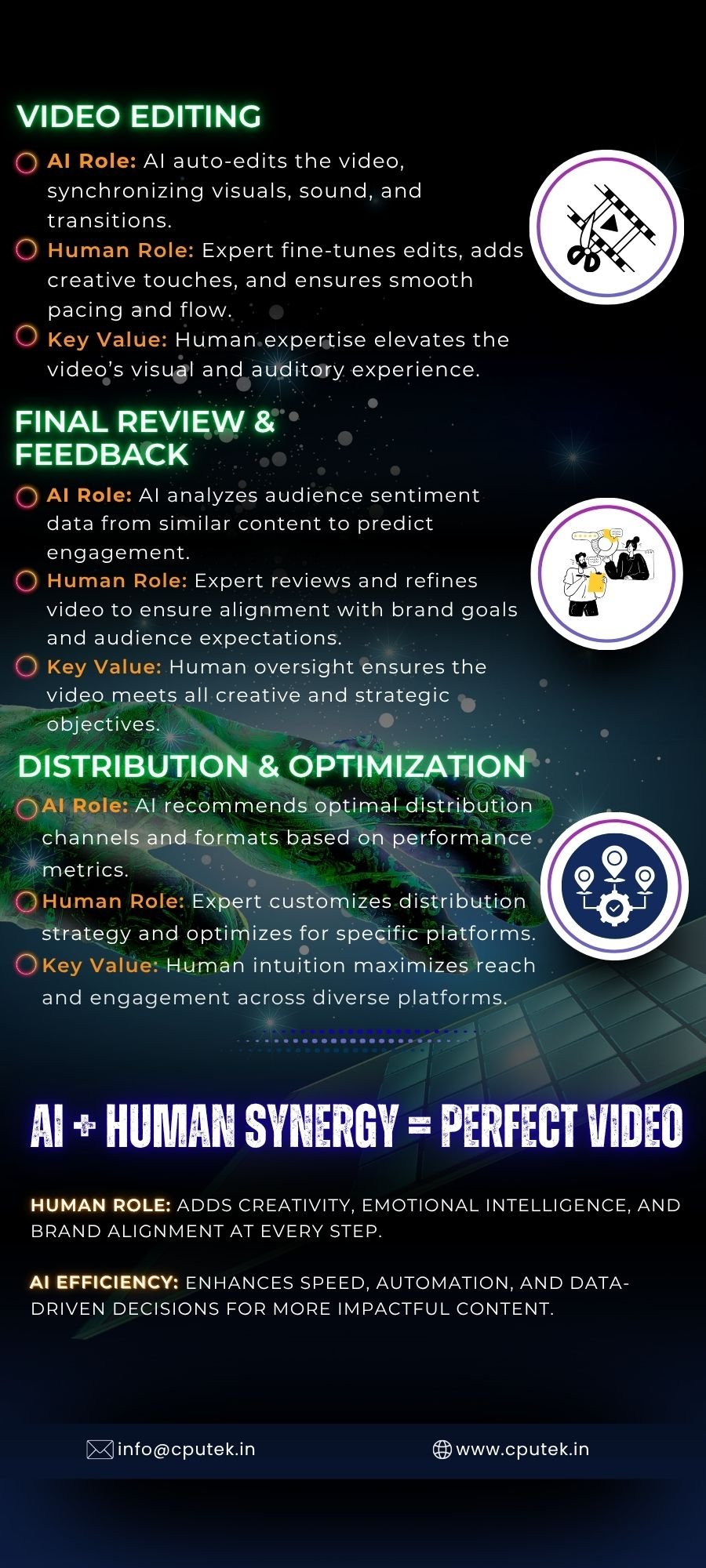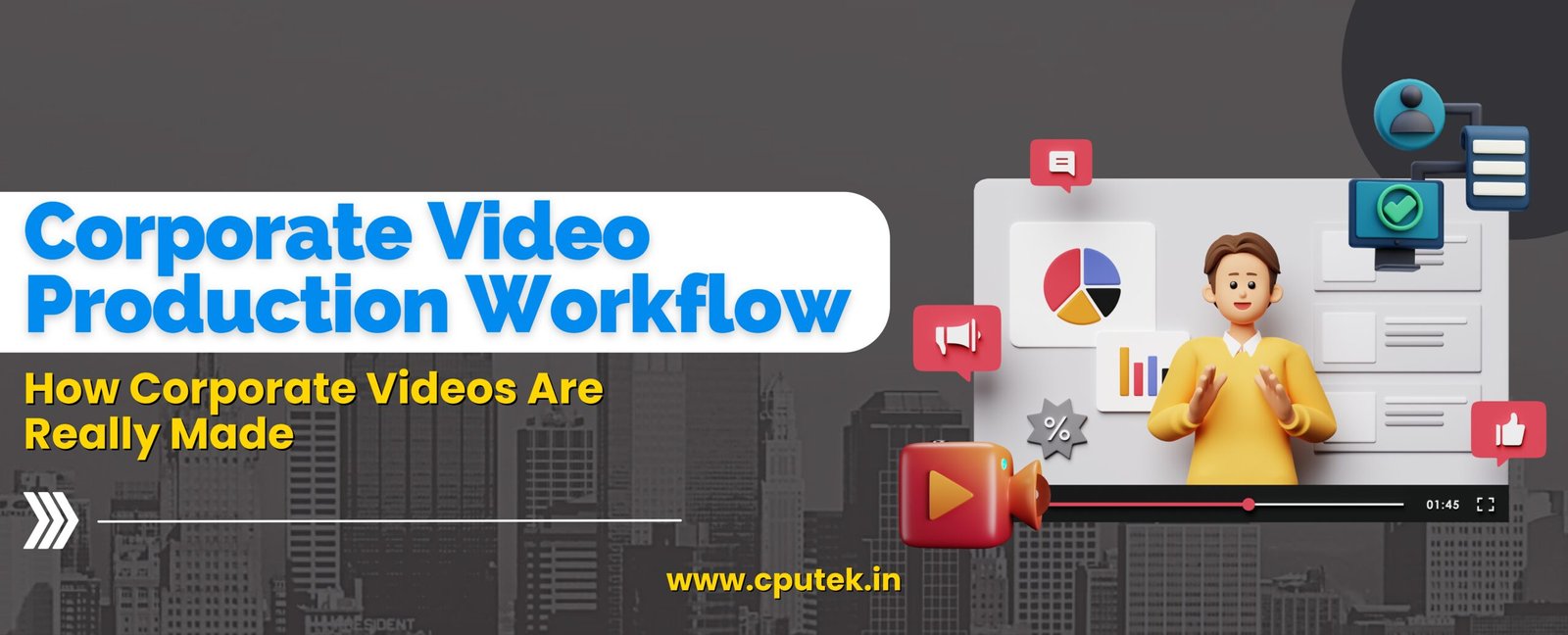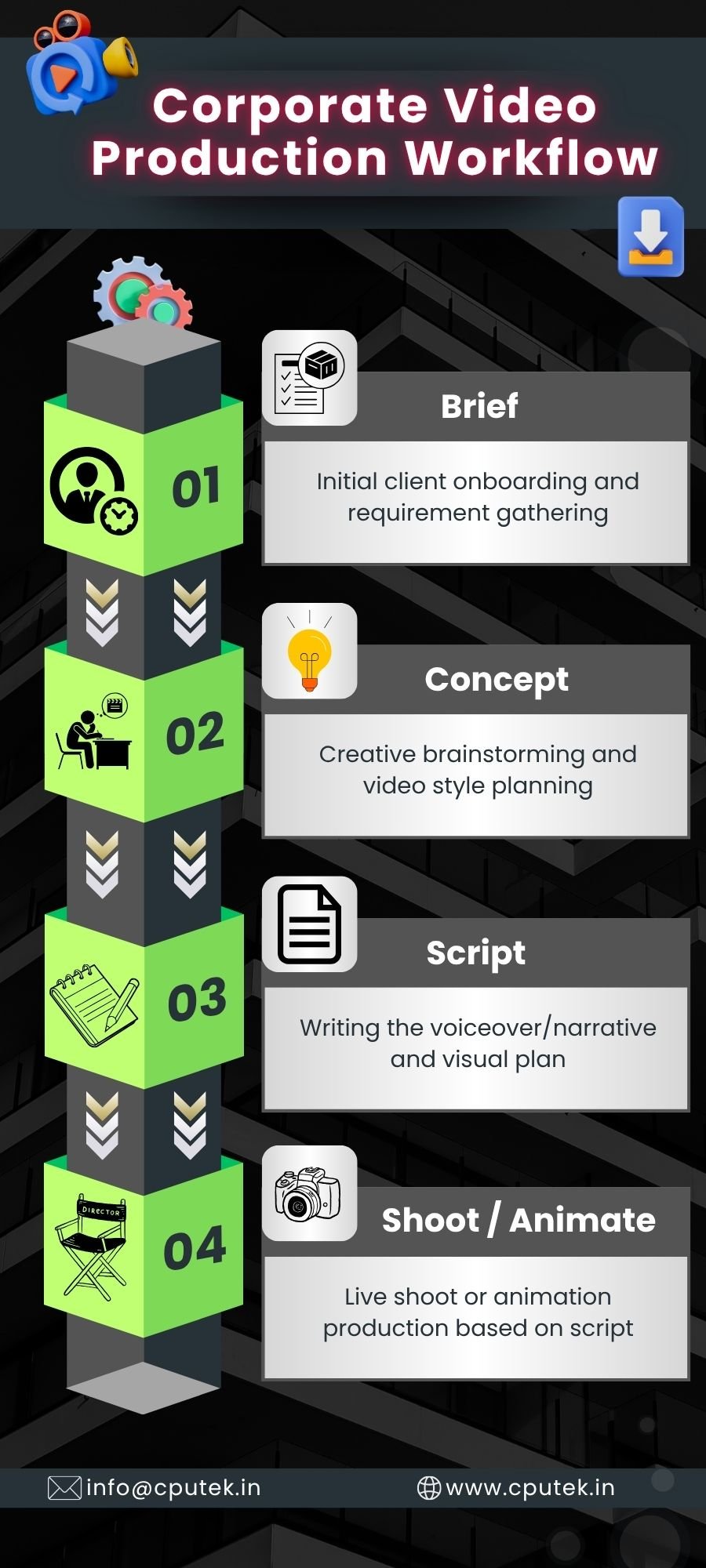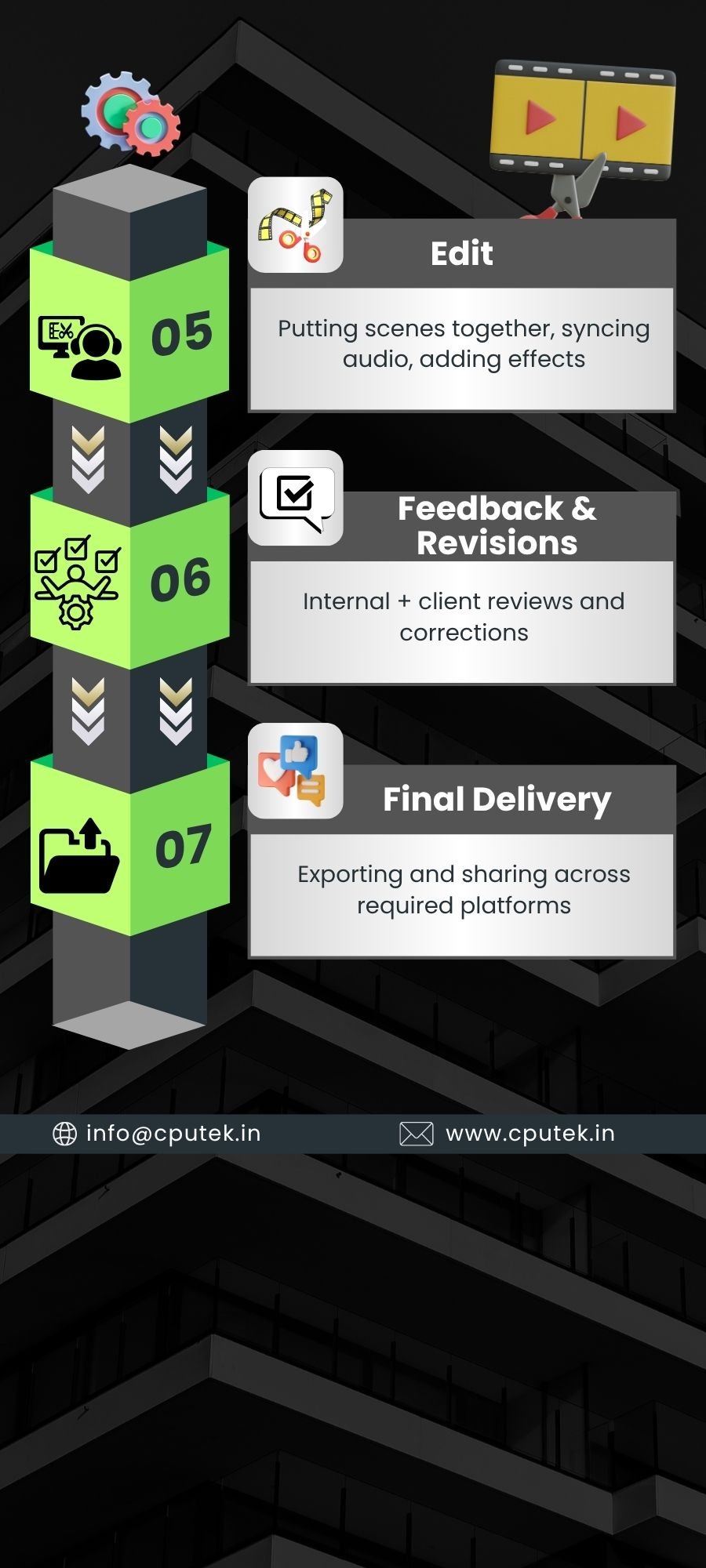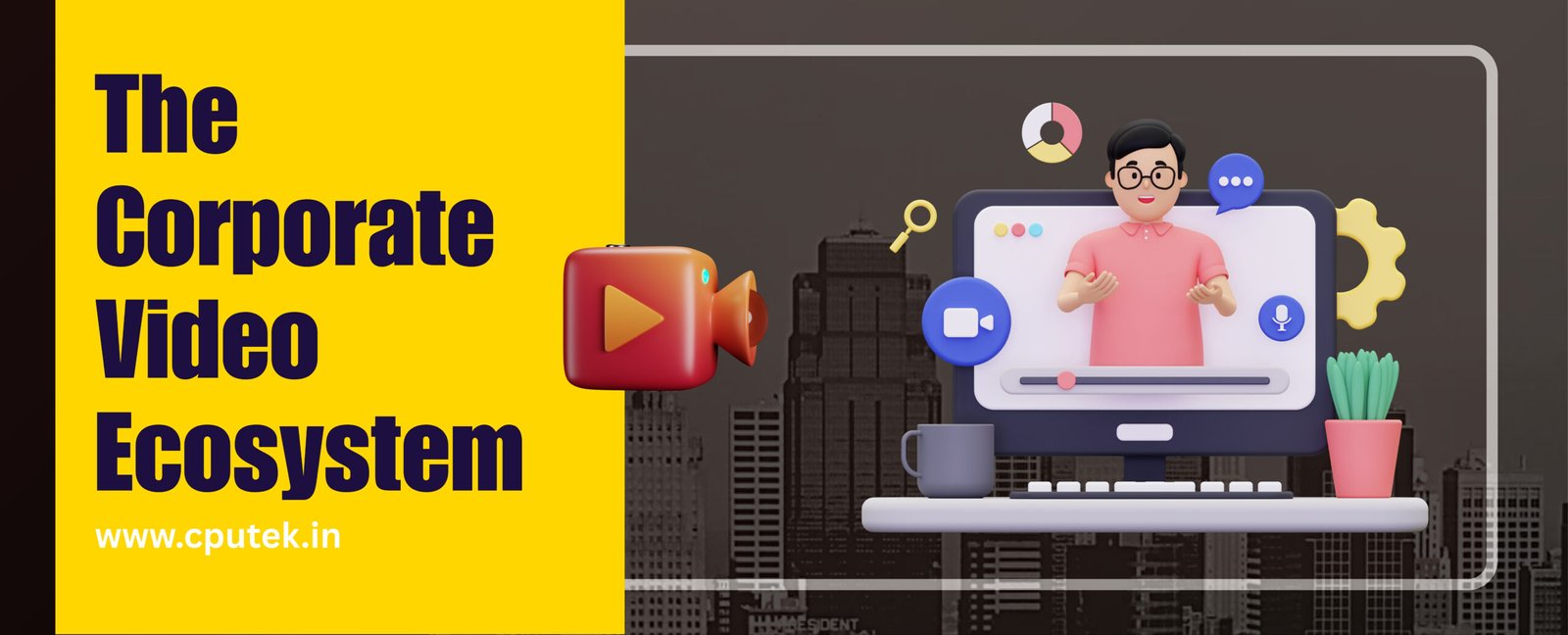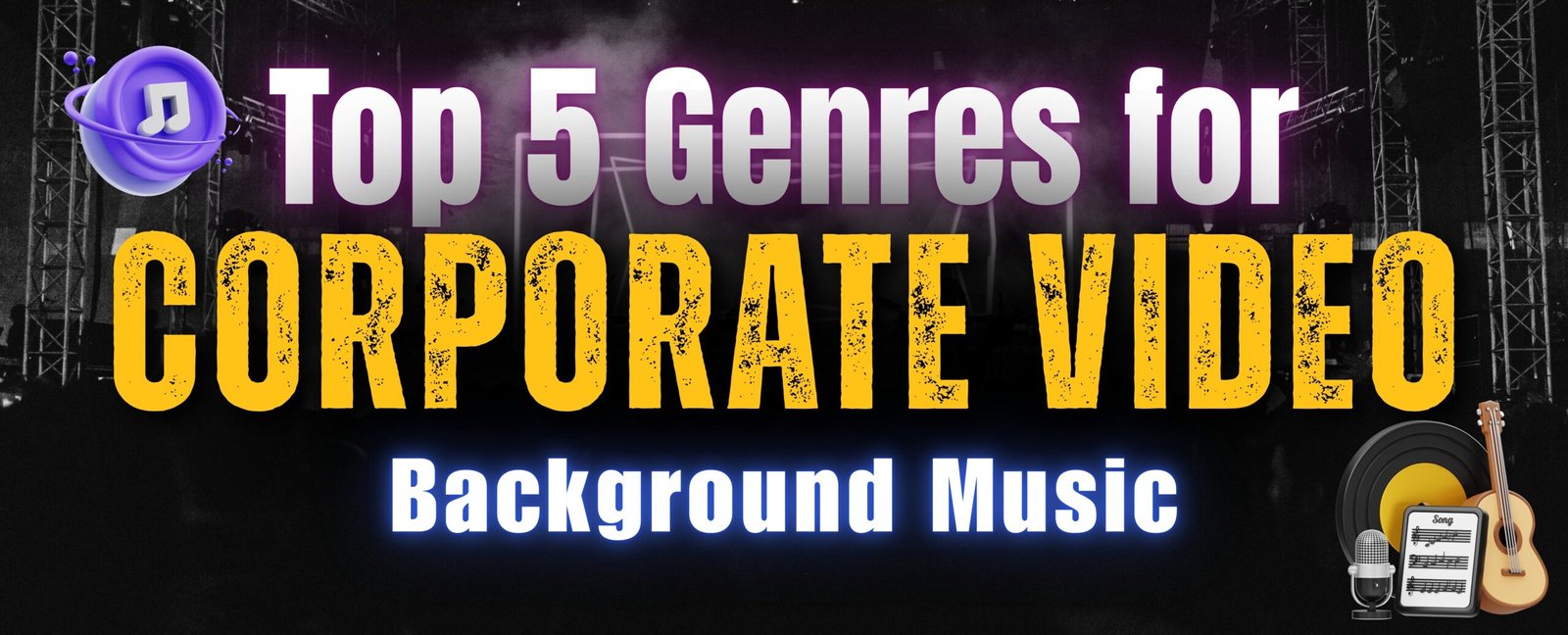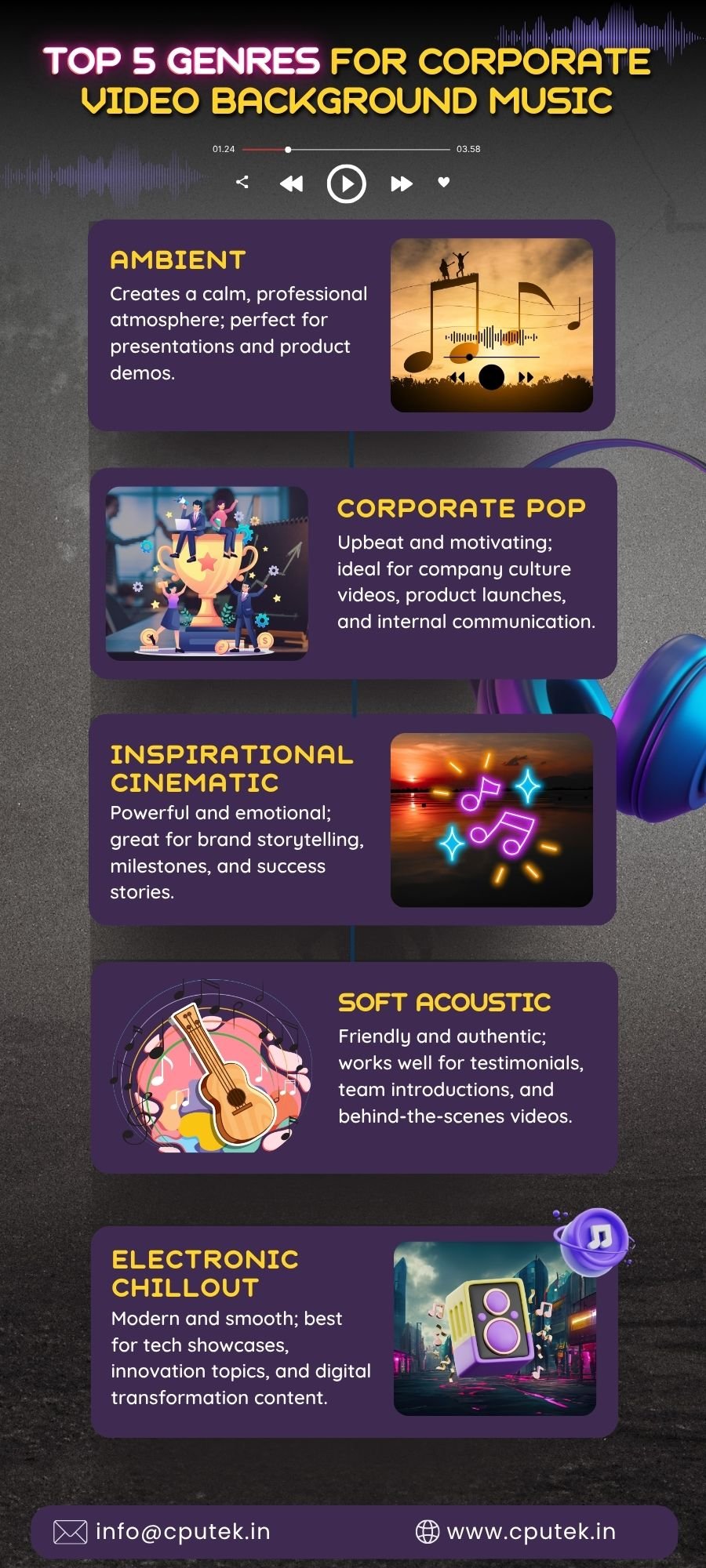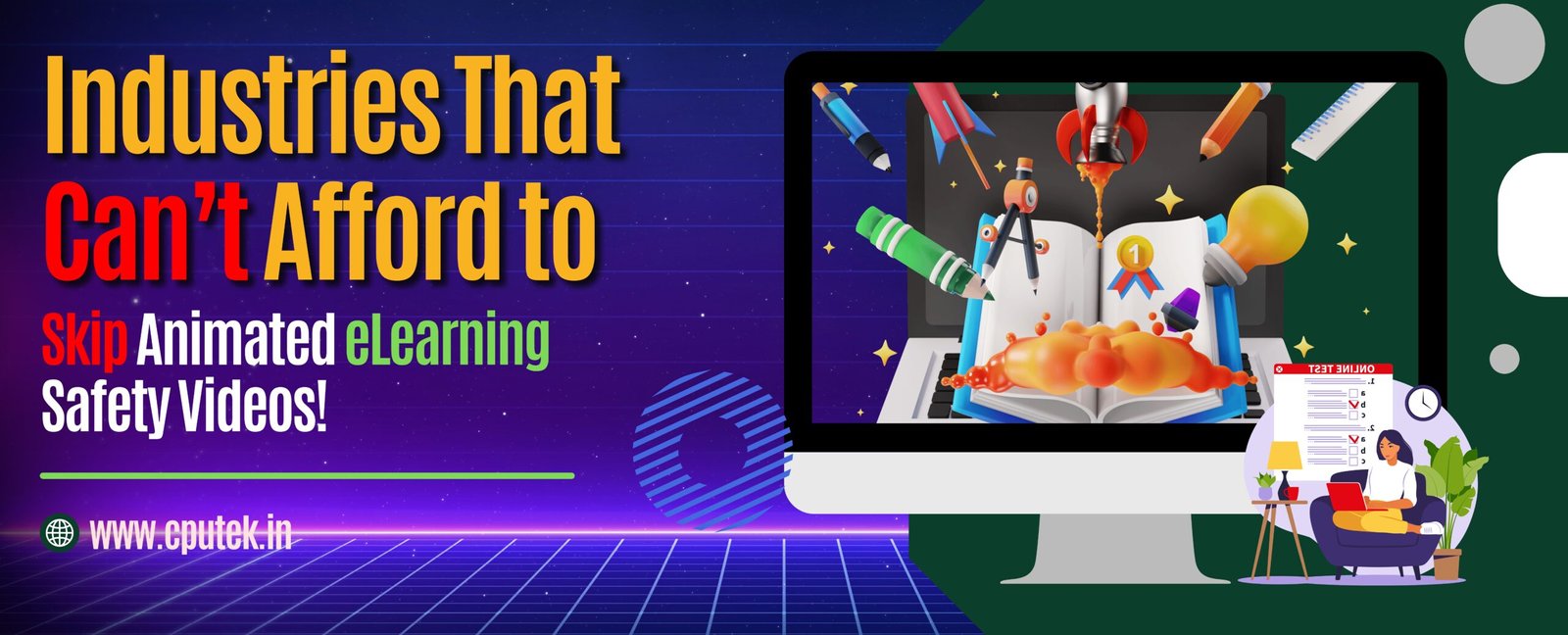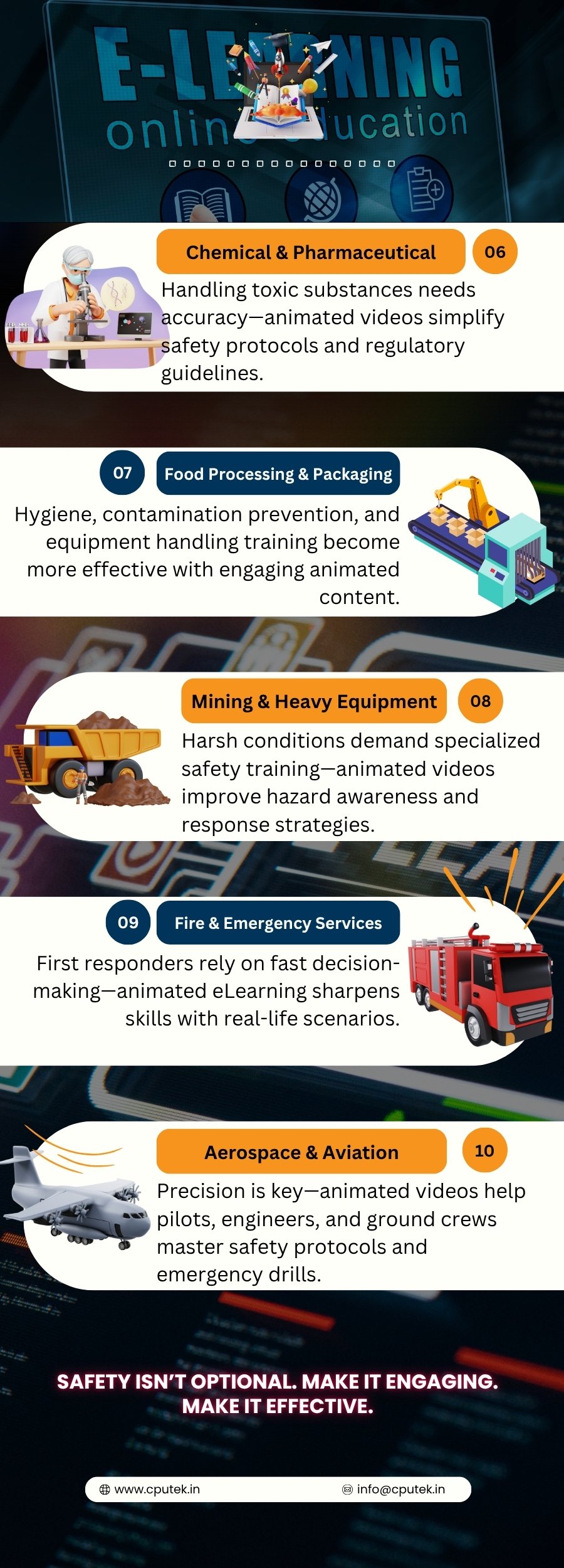When you think of corporate videos, what comes to your mind? For many, it’s actors on set with cameras and lights capturing the action. But that’s not how we operate. At our video production company, we specialize in creating corporate videos entirely using animation, without the need for live-action scenes. This means that the video production process, while still comprehensive and detailed, looks a bit different.
The infographic below is a visual guide of how we handle the process of making corporate videos, from concept to final delivery more creatively and practically.
Pre-Production: Planning the Animated Video
Plenty of thinking and planning occurs before starting the animation process. At our corporate video production company, the initial phase of actual work occurs during pre-production where a basic idea transforms into a complete video.
Concept Development: Defining the Vision
The first step of our process involves teaming up with clients for brainstorms where we understand their video objectives. Which key message should the company transmit through this content? Who’s the target audience? How should the video affect the viewing experience of our audience? Our creative department merges concepts which align with corporate branding for the clients alongside audience considerations.
We move on to the precise details after we establish the fundamental structure. Our team develops the story structure and examines the animation methods that will make the story most effective while building easy-to-understand visuals for complex concepts. The stage requires patience since it must perfectly match the client’s marketing objectives.
Scriptwriting: Turning Ideas into Words
Next, we write the script. The scriptwriting process remains simple since we deliver information straightforwardly for everyone to understand. Scriptwriting stands as a crucial element for animated corporate video because dialogue must sync with visual screen content. The successful execution of our videos depends on the perfect pacing since we must avoid both hastiness and slowness. The language within scripts remains conversational and we choose script tones that match brand personality either formal or friendly or humorous.
Storyboarding: Visualizing the Story
Moving forward with script development enables the creation of visual scene representations. The storyboard process involves drawing out visual representations of every scene instead of keeping it as notes. Creating a storyboard enables us to design animations through visualizing character movement while structuring the video’s sequence. This stage enables us to create visuals for text elements and graphical displays. The script calls for product feature representation so we choose between animated graphics and illustrations.
Production: Crafting the Animation
With the planning done, it’s time to roll up our sleeves and start bringing everything to life. This stage is where the magic happens.
Animation Design: Building the Visuals
Our animators begin their work when the storyboard passes its review stage. The production team utilizes industry-standard software such as Adobe After Effects, Toon Boom and Blender to construct every element from its foundational stage. Our team implements visual execution based on the selected animation style which could be 2D, 3D or motion graphics to maintain alignment with the original design concept.
The animation team transforms static images into moving characters through the process of animating every movement in the project. The process relies on precise timing because we evaluate characters’ environmental relationships and naturalistic storytelling behaviors. Creating a smooth sequence of events requires our team to work like a puzzle team by assembling components while making adjustments until everything functions perfectly.
Creative Direction: Defining the Style
Through animation we gain artistic capabilities which live-action productions fail to provide. Our creative group collaborates directly with animators throughout the production period to establish the video’s creative presentation. Animation depends on color choices which either create a playful ambiance through bright hues or establish a formal presentation atmosphere through muted tones that should align with the brand identity. Every visual element including fonts alongside character design aligns exactly with the client’s branding principles.
Our latest work included producing a video advertisement for a technology-based organization. The design featured plain vector artwork together with a professional selection of colors that formed its aesthetic basis. We implemented quick and colorful animations and lively transitions on that startup’s project to demonstrate their energetic brand personality. The essential thing is to use proper storytelling methods coupled with visual display that suits the content.
Post-Production: Fine-Tuning and Final Touches
The animation finishes at this stage for the final production phase. Post-production plays a vital role in completing animated projects since it transcends basic audio addition and video editing tasks. The finishing step serves to ensure everything achieves a polished professional look.
Editing the Animation: Bringing it All Together
We move to editing work following completion of the animation creation phase. Adobe Premiere Pro enables us to link animated sequences together while establishing perfect timing through the editing process. During editing we must cut and adjust the animation to produce a smooth transition between all scenes. At this stage we examine visual elements to confirm that all frames integrate perfectly together.
We utilize AI-based applications for video enhancement such as optimization of quality and effect integration and transitional suggestions. Time efficiency improves through these tools which allow our team to dedicate more attention to video creation tasks.
Sound Design: Adding the Finishing Touches
Video animation depends primarily on visual elements yet sound functions as the essential component which brings animations to full vitality. We incorporate voice overs along with background music and sound effects after the animation production phase to enhance the visual elements. Audio production involves professional voice artist recording services that deliver clear professional narrations matching the animation style. The sound effects follow a strategic sequence to enhance the narrative without engulfing the visual elements.
When a video character discusses complicated information the background audio stays minimal to maintain an unobstructed messaging flow. The music volume in a product demo video needs increased energy levels because it needs to fit the animation speed.
Final Review: Getting Client Approval
Here, at our corporate video production agency, we perform a final review with the client once all sound elements and visual effects are completed. Here we verify that everything satisfies their demands. We perform a final inspection that includes a comparison for recent modifications and evaluation of both the timing sequence and verification against the established video goals. The completion of the final product becomes possible after the client grants their approval.
To get a clear view of how all these stages work together, check out the infographic below. It offers a visual guide to the entire video production process, making it easy to see how each part connects and contributes to the final result at our corporate video production company.

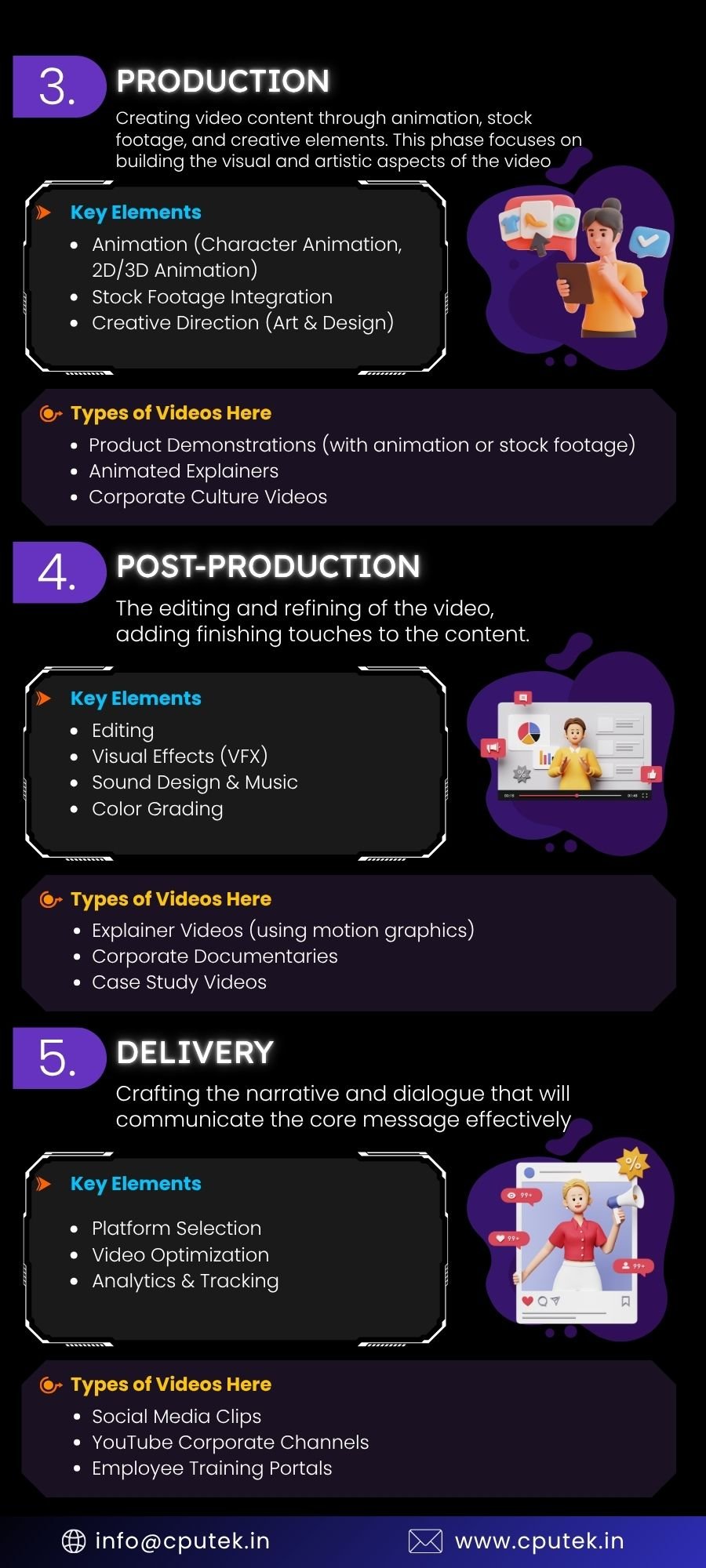
Conclusion
Careful attention to planning and detailed work defines the entire process of producing an animated corporate video. Our team puts effort into every production to maintain client brand presence while conveying the intended message with engaging creative elements.
By day I create engaging content along with infusing high-volume, low-competition keywords strategically so that it gets loved by you and Google Crawler. Off the clock? I scroll for fresh ideas. (Don’t judge, gotta fuel the creativity!)
